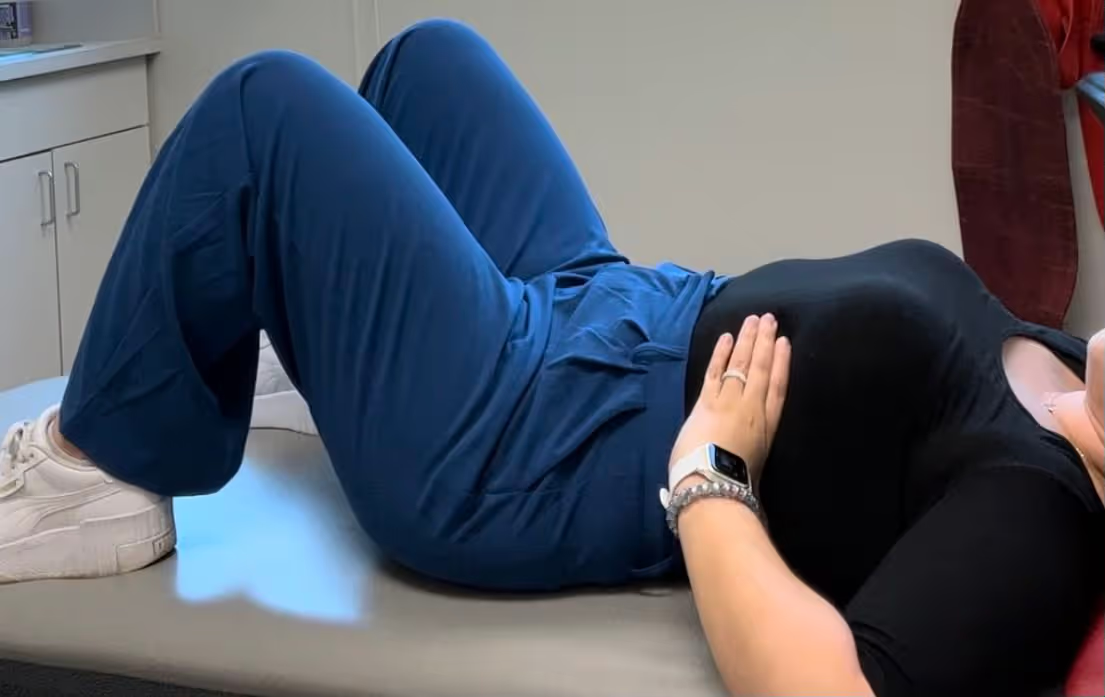How we breathe is primarily controlled by the diaphragm, along with other accessory muscles of respiration. You have probably heard of the diaphragm before. It's the muscle that has something to do with how you breathe, right? While the diaphragm is a critical part of our lives for respiratory function, it is also a critical part of our pelvic health too!
The diaphragm is a dome-shaped muscle that sits under our rib cage, and even attaches to the spine and the sternum (our breast bone).
When we inhale, our diaphragm descends, pushing pressure downward. With proper pressure mechanics, we should see the air expand into our bellies, and go down toward the pelvic floor, where the muscles then need to RELAX.
As we exhale, the diaphragm recoils back up, as air is released through the nose or mouth. This means we should see the belly deflate of air, and the pelvic floor muscles return again.

If there is any restriction in our pressure mechanics, we often see some breathing patterns that are not conducive to proper rib and belly expansion, and pelvic relaxation during the inhale.
This could show up as:
- Apical breathing. Breathing only high up into your chest/puffing the chest out.
- Belly breathing. Only the belly inflates and expands.
- Paroxysmal. Belly flattens with inhale, and expands with exhale.
So how can you improve your pressure mechanics?
Try this:
- Sit or lie down in a comfortable position
- Make a “C” shape with your hands and place them on the sides of your ribs
- Inhale through your nose, allowing the air to expand into your hands at your ribs
- Allow the air to expel from your mouth slowly, and feel how your rib cage returns back down

Was this difficult? Did you have a hard time coordinating your inhale with expanding your belly? Were you able to feel the up and out movement of your rib cage?
If not, try some of these exercise variations!
Lay over a pillow for back body breathing:

... Or try it in child’s pose:

You can even lay on the pillow on your side and breathe into the top ribs, repeat each side:

Happy breathing!
To learn more about ways to help your pelvic floor, contact me at Activcore Princeton.
Disclaimer: The views expressed in this post are based on the opinion of the author, unless otherwise noted, and should not be taken as personal medical advice. The information provided is intended to help readers make their own informed health and wellness decisions.
.avif)
.avif)
.avif)
.avif)

.svg)

